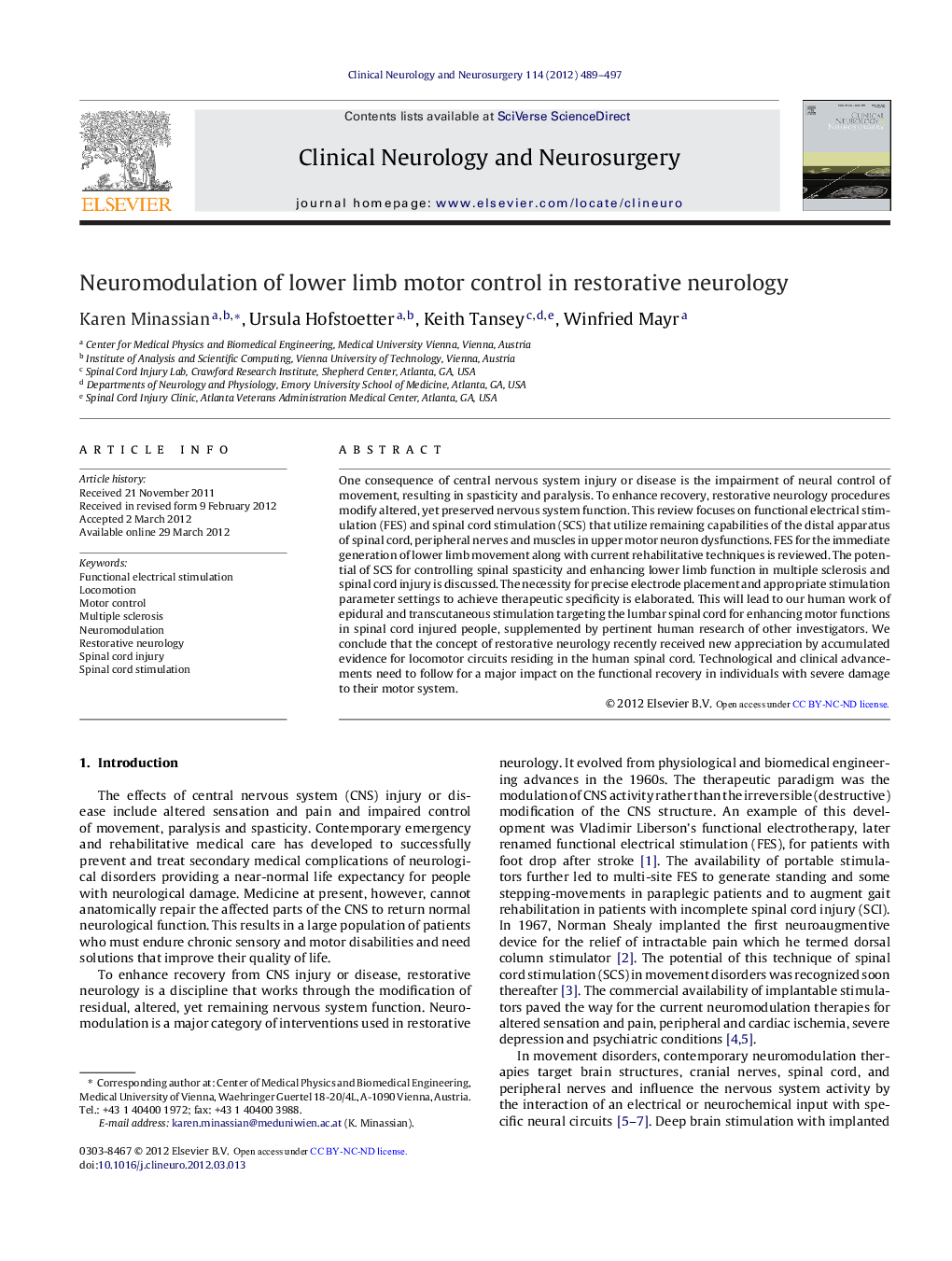| Article ID | Journal | Published Year | Pages | File Type |
|---|---|---|---|---|
| 6007169 | Clinical Neurology and Neurosurgery | 2012 | 9 Pages |
One consequence of central nervous system injury or disease is the impairment of neural control of movement, resulting in spasticity and paralysis. To enhance recovery, restorative neurology procedures modify altered, yet preserved nervous system function. This review focuses on functional electrical stimulation (FES) and spinal cord stimulation (SCS) that utilize remaining capabilities of the distal apparatus of spinal cord, peripheral nerves and muscles in upper motor neuron dysfunctions. FES for the immediate generation of lower limb movement along with current rehabilitative techniques is reviewed. The potential of SCS for controlling spinal spasticity and enhancing lower limb function in multiple sclerosis and spinal cord injury is discussed. The necessity for precise electrode placement and appropriate stimulation parameter settings to achieve therapeutic specificity is elaborated. This will lead to our human work of epidural and transcutaneous stimulation targeting the lumbar spinal cord for enhancing motor functions in spinal cord injured people, supplemented by pertinent human research of other investigators. We conclude that the concept of restorative neurology recently received new appreciation by accumulated evidence for locomotor circuits residing in the human spinal cord. Technological and clinical advancements need to follow for a major impact on the functional recovery in individuals with severe damage to their motor system.
